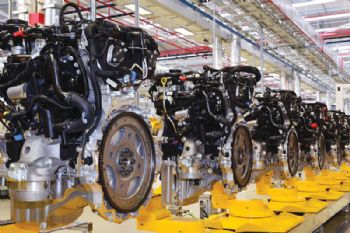
UK engine production saw a year-on-year fall of 3.5% in June (to 228,324 units), as demand from British car plants declined.
Exports helped counter the domestic decline, being up 5.6% (at 138,314 units) for the month and up 14.7% for the first six months of 2018 (with a total of 918,219 units exported).
Overall production for the first six months was the highest on record, up 5.7% with almost 1.5 million engines built.
Mike Hawes, SMMT (
www.smmt.co.uk) chief executive, said: “Despite domestic market challenges, British engine production remains strong.
Thanks to increasing global demand for the high-quality low-emission powertrains manufactured in the UK, output for the first six months is the highest on record, made possible by significant previous investment in a number of engine production facilities.
"Britain is a world leader in automotive engine design and manufacturing, but to attract future investment and safeguard further growth, we need to maintain free and frictionless trade with the EU and other global markets.”
It was a similar picture for UK car production, which saw a year-on-year fall of 5.5% in June, with 128,799 cars rolling off production lines; and while exports grew 6.0% in the month, this could not offset the 47.2% decline in production for the UK.
The SMMT said model cycles, operational changes and preparation for a new range of next-generation vehicle technology ahead of new WLTP emissions standards (World-wide Harmonised Light Vehicle Test Procedure), all played a part in the month’s anomaly.
Production for export has continued to drive volumes in 2018, with overseas orders broadly stable. In the first six months of this year, 675,187 cars were built for global markets, helping to mitigate disappointing domestic demand, with overall output down by just 3.3% to 834,402 units.
However, despite a small decline in demand, the EU remained the UK’s biggest trading partner, accounting for 360,270 units – more than half (53.4%) of all cars produced for export.
Individually, EU countries also made up half of UK Automotive’s top 10 export destinations, with Germany, Italy and France the UK’s second-, third- and fourth-biggest markets (after the USA and ahead of China).
Although the UK’s automotive industry now exports more than eight out of every 10 cars it builds (to more than 160 countries world-wide), it is also a major importer.
More than 87% of the cars registered by British buyers in the first six months of 2018 came from overseas plants, and more than two thirds (69.1%) from the EU.
Mr Hawes said: “June’s results demonstrate the risks of judging one month’s automotive performance in isolation, with numerous and varied factors creating a ‘perfect storm’ for home market output.
“Looking at the longer-term picture, the sector is performing as expected in the context of market conditions at home and abroad.
“These first-half figures are a reminder of the exports-led nature of ‘UK Automotive’, the integrated EU supply chain and our mutual dependency on free and frictionless trade.”
In contrast, UK commercial-vehicle (CV) production rose in June, with exports again driving demand and the 7,769 vehicles leaving production lines representing a 6.1% increase.
Production for the UK rose by a moderate 3.1% (equivalent to some 91 units), alongside a more substantial 8.1% boost in export demand, with 4,713 vehicles shipped to overseas markets in the month.
However, in the first six months of 2018, output saw a year-on-year fall of 5.3%.
Almost seven out of every 10 vans, trucks, taxis and buses built in the UK in the first half of 2018 were exported — with some 95% of those going to the EU.